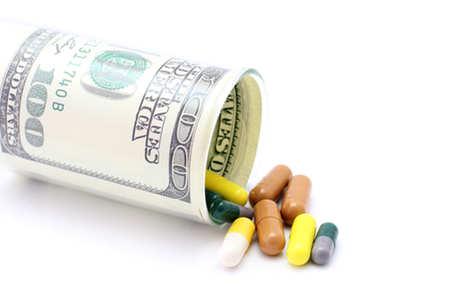The cancer drug business is quite a profitable one. A “high risk, high reward” proposition has been the narrative for those in research and development (R&D). Successes, marketing, patent protection and discovery cost money. Failures cost money. Not pursuing a different path with a failure or even a success costs money. As does lost revenue while performing R&D.
Can an accurate dollar value even be placed on what it takes from idea conception through utilization to develop a new drug? Due to the opaque nature of the industry’s disclosures, a new study published in JAMA Internal Medicine sought to quantify a standard amount by focusing on new cancer drugs and analyzing the Securities and Exchange Commission (SEC) filings of the respective companies selected. The researchers methods and results will be addressed shortly.
Seems like common sense when it comes to this conventional wisdom. Or, at least that’s what the industry is used to spoon feeding the public. What’s the reality? The truth is drug development, like most medical innovations, is complex, additionally bound to patent and regulatory approval processes, requires labor and overhead costs, perpetuates winners and losers when it comes to levels of demand. And on and on.
Add in some cloak and dagger to the information companies divulge and taking the industry’s word for it as prices skyrocket for much needed drugs is incurring less and less patience—by the populace and especially politicians these days. With this latest study, researchers are also apparently fed up. One not need to look much further than the ubiquitous scorn directed at the embattled Martin Shkreli— former CEO of Turing Pharmaceuticals who jacked up the price tag by many magnitudes for a valued medicine —or towards Mylan for its escalating epipen expense given the dearth of feasible, generic alternatives. In these and similar scenarios, the excuse refrain typically includes defending such a position as necessary to cover other expenses of doing business in such a worthwhile, volatile frontier.
Due to limited available data on the topic, this research team attempted “to provide a contemporary estimate of R&D spending to develop cancer drugs…A common justification for high cancer drug prices is the sizable research and development (R&D) outlay necessary to bring a drug to the US market.” An analysis by Tufts Center for the Study of Drug Development maintains $2.7 billion is required for a single drug to come to market. Due to undisclosed data used to generate this figure provided by companies, the authors of the current study claim “this analysis lacks transparency and independent replication.” So, they pursued their own path through the use of public records and interpretation that could be repeated.
Their study design involved collecting data on ten companies with no drugs on the US market that received approval by the US Food and Drug Administration (FDA) for a cancer drug between January 1, 2006 through December 31, 2015. They focused on initiation of drug development activity to date of approval to determine their “cumulative R&D spending.” They concluded: “The cost to develop a cancer drug is $640 million, a figure significantly lower than prior estimates…With a median of 4.0 years (range 0.8-8.8 years) since approval, the total revenue from sales of these 10 drugs since approval was $67.0 billion compared with total R&D spending of $7.2 billion ($9.1 billion, including 7% opportunity costs)…This analysis provides a transparent estimate of R&D spending on cancer drugs and has implications for the current debate on drug pricing.”
From a study design perspective, this paper leaves a bit to be desired. First, the authors cherry picked small companies that do not necessarily play the high stakes that much larger companies do in multiple realms even beyond cancer drugs. To extrapolate this estimate is an industry standard is a bit of a stretch. Because these drugs treated rarer conditions, the trials were not as extensive as those required for more common diseases which create greater R&D costs. There are also flaws to their estimates of drug failures which, in the end, a success must cover.
That the revenues were much higher than the development costs comes as little surprise given the free market. Demand will dictate every time. And, those benefits tended to keep giving over time. It is their contention patent protections outweigh risks which companies would dispute.
So, what’s the bottom line? It’s not rocket science that companies reward themselves for taking on such risk. And, drug discovery does innovate. As far as drug pricing goes and seeing any changes that benefit the consumer, look no further than the current head of the FDA Dr. Scott Gottlieb who has vowed to shift policy to rid gaming of the system, “Too many patients are being priced out of the medicines they need. While FDA doesn’t have a direct role in drug pricing, we can take steps to help address this problem by facilitating increased competition in the market for prescription drugs through the approval of lower-cost, generic medicines.” He further details his Drug Competition Action Plan here.
Only time will tell if the FDA’s multiple measures to spur competition will successfully quell costs and preserve innovation. That may come sooner than a fully transparent pharmaceutical industry, but here’s hoping.




